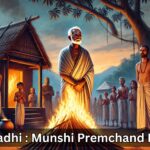The best treasures of Eighteenth Century Literature are found in the Sphere of fiction. The Augustan age produced at least four novelists, after Defoe, and swift, who are of perennial importance in the history of English literature. They are Samuel Richardson, Henry Fielding, Tobias Smollett and Laurence Sterne. These novelists represented the growing middle class of England. They portrayed the rising bourgeois ideal and sensibilities. Realism was always their strong point and they tired to explore human behaviour and human relationship as found in society.
Samuel Richardson (1617), the first of these four giants was a printer by profession. He had little education, but during his young days he used to write love letters for the young girls of his place. Thus he acquired an intimate knowledge of the emotional life of young women, he came to London, got himself apprenticed to a London printer and later married his daughter. While compiling a volume of model letters, he discovered his talents as a novelist at the age of fifty one. He started writing epistolary novels and produced Pamela’ (1704-1)’ Clarissa Harlowe’ (1747-8) and Sir Charles Grandison (1753-4).
In 1739 Richardson decided to write a series of letters to be called Familiar Letters. On how to think and act justly and prudently in the Common Concerns of Human life. He remembered at this time a story of a beautiful and young maid servant who resisted the education of young squire and who ultimately succeeded in marrying the square. Richardson felt that he could write a novel on his incident, and the result was ‘Pamela’. The novel was written in seven volumes, in the form of letters most of these being written by Pamela to her parents, Pamela is a girl of great beauty and virtue and she regards her chastity as a real treasure to be preserved at all costs. The villain makes various plans and assaults on her chastity, but Pamela resists. She is threatened by who rogues Mr. Jewkes and Monsieur Colbrand who are in the employ of the villain with minute detail and stark realism these two characters are portrayed. Pamela defends her chastity, but she always feels the hypnotic charm of Mr. B. Thus when she is allowed freedom By Mr. B She is rather unwilling to enjoy her freedom. I think I was loath to leave the house. Can you believe it? What could be the matter with me, I wonder, I felt something strange at my heart. I wonder what ailed me. Ultimately she gets her rewarded when she is happily married to Mr. B.
But Pamela is not the best work of Richardson. His best work is Clarissa Harlowe. Clarissa is also a story of a young woman’s efforts to defend her chastity against the seductions of a villain, but like Pamela, it does not end happily it ends in tragedy. It has a well-wrought plots and it has less of melodramatic scenes than Pamela. Clarissa is a virtuous and beautiful young lady who in the beginning of the novel is asked to marry a certain Mr. Soame’s by her family. But Clarissa refuses to marry against her will. Clarissa is thus the first woman to protest against the domination of parents in matters marriage. Next she comes under the protection of Lovelace who is the real villain of the novel. Lovelace is a rake and her tries to take undue advantage of the helplessness of Clarissa. But she is a woman of firm determination and is able to withstand all the evil machinations of Lovelace. Lovelace takes her to a London loading which in reality is brothel. He tries to win her ever, plays various tricks on her subjects her to every sort of humiliation and victimisation, but is unable to break the indomitable spirit of Clarissa.
Sir Charles Grandison, the last novel of Richardson, is weak both in its construction and its final appeal. Richardson has painted, two villains Mr. B and Lovelace and now he paints an ideal gentleman. Richardson main strength has always been his delineation of psychological conflicts or his introspective studies of human mind but in the last novel these conflicts are absent. This absence of moral and psychological conflicts makes the novel uninteresting. Moreover, here Richardson writes of those whom he does not know intimately. Richardson is able to draw faithful picture of the middle class-life. The characters of his last novel are all taken from ‘high life’.
The greatest novelist of the age was however not Richardson, but Henry Fielding. He is not only the real father of English novel, he is also the first great English novelist who can be ranked along with Balzac. Dickens and Tolstoy. Fielding’s humanism is as deep as that of Tolstoy. Fielding’s humanisms is as deep as that of Tolstoy,. his tolerance is as wide as that of Shakespeare. His range is without frontiers; his spirit is of all pervading charity expressing in a genial but vigorous compassion. He is not introspective like Richardson. He has not the punch of Swift but his human sense makes him the greatest novelist of his age. Fielding looks at human sense makes him the greatest novelist of his age. Fielding looks at human beings with great objectivity, he introduces complete human beings in his novels with their strength and weaknesses and hence they always appear in flesh and blood.
Henry Fielding was born in 1707 at Sharpham Park, Somerset. He came from a noble legal and military family. He studied at Eton and at Leyden and started his career as a playwriting in London in 1748. With the passing of the Licensing Act in 1737, under the inspiration of Robert Walpole, his dramatic career came to on end. In 1848 he became a magistrate and in that capacity he came to know various types of people. Fielding utilised his experiences in his novels. In 1742 he wrote ‘Joseph Andrews’ which he wanted to be a satire on Richardson’s Pamela. Next year, Jonathan Wild an anti Walpole novel came out. In 1974 he wrote his greatest work “Tome Jones’. 1751 saw the publication Amelia. His health broke down and he went on a voyage to Portugal. He died in 1754 and his Journal of a Voyage Lisbon was published after his death in 1755.
Thus, he exposes affectations and hypocrisy of the men and women around him: he speaks out against the idealisation of sophistication and snobbery. He starts Joseph a drew as satire against Pamela in imitation of the manner of Cervantes : author of Don Quixote: Joseph is supposed to be a brother of Pamela, honest and simple who defends himself against the on slaught of Lady Bobby. The novel however, soon out reaches the limitations of a satire.
Joseph Andrews is a fine Picturesque novel. The adventure of the road dealt with admirably and they all fit in with the central plot. The next work of Fielding Life of Mr. Jonathan Wild the Great’ offers a panoramic survey of output power and is a satire on so called his life : Fielding is decidedly didactic here and his propaganda often mars the flow of the plot.
The triumph of Fielding is Tom Jones‘ which is one of the greatest novels of the world. It is comic epic in prose where the great qualities of Fielding – his vitality, common sense, human sympathy together with his objectivity and ability of plot construction and characterisation are fully displayed. The world of Tom Jones’ is the whole humanity. It is the world of right and wrong of high ideals, low arms and prejudice – the world where we live. Fielding has put all his manifold-experience of life-as a barrister as a magistrate-in this epic. He has seen much of life and whatever he has seen thoroughly. Naturally his range is here Shakespearean like a true artist he paints faithfully whatever he sees. His characters are of Hanoverian England but in another sense they are enteral.
Fielding’s last novel ‘Amelia’ is quite a departure from his other novels. Here his comic spirit is less in sight and his intellectual and social intentions are displayed in his last days. Fielding was deeply engaged in resolving the problems of his time, he wrote his important sociological works. An Enquiry into the causes of the late ‘Increase of robbers’ (1757 and The Proposal for making an Effectual Provision for the poor’ (1753). In ‘Amelia’ we find Fielding in the role of a critic of the morality. The genial and comic spirit of Fielding is absent in Amelia where ‘the effect is different the range of reference; like the range of scene, is designed not for expansiveness but for thoughtful and analytical concentration. ‘Fielding’s wide reading still prompts a good deal of literary quotation, but the mock heroic panacea, the irreverent sallies. and ludicrous similes have gone. Their place is taken by brooding commentary relating to the moral bearing of conduct and social custom…. Thoughtless enjoyable than the comedies. ‘Amelia’ deserves admiration for its mental change and growth, and for the success with which its quite, tempered colouring of style and tone produces a novel of quite individual character (Humphrey’s).
The third master of eighteenth century novel. Tobias Smollett was of a quite different temperament than the introspective Richardson or the genial and generous Fielding. He was the angry man of the century, a little frustrated and his anger and frustration are reflected in his novels. He followed the picturesque tradition, he was drawn both to the traditions of Le Sage and he introduced the sea life and adventures on the sea to English novel. He had a finite conception about novel which he started in the preface to Ferdinand Count Fathom.
His fist novel Roderick Random betrays the irritable temper and frustration of Smollett. Roderick is often the writer himself. He is young Scot who being disappointed with his failures in London goes on a ship as an assistant to the surgeon of the ship. He has had violent experiences in the Cartagena campaign of 1741. He, however, discovers his missing father in Paraguay, returns to his native and lives happily. Thus it is the first sea tale in English novel. The incidents and accidents of Roderick’s life are described realistically, with a brutal ruthlessness which is quite unlike the genial and comic manner of Fielding.
A novelist of quite of quite a different sort was Laurence Sterne. With him the novel is not an agglomeration of incidents or a collection of characters, but an artistic form where impressions are looted down and explained through sensory images. He has been rightly called the first impressionist.
Sterne was born in Ireland in 1713 and studied at Cambridge. He be- came a priest, but his real talents were in the field of literature. He became famous in 1760 when the first two volumes of Tristram Shandy’ appeared Seven more volumes continued and the ninth volume came out in 1767. In 1768 he brought out ‘A Sentimental Journey’ and died the same year of pleurisy.
Outwardly “Tristram Shandy’ is not an interesting novel; it is a rambling and eccentric patch of work of anecdotes, digressions, reflections, jests, parodies and dialogues centering on the character and opinions of the narrator’s father, Walter Shandy and those of his brother, the narrator’s Uncle Toby, with other characters and caricatures introduced to provide humours of sentimental But inwardly there moves a conscious artistic pattern which tries to examine the past in light of the present. Sterne invokes different associations of ideas through images and suggestions. But he is not deficient in humour. The idiosyncrasies and ‘hobby horses’ of human mind are illustrated humorously. Sterne should be regarded as the father of the stream of consciousness novel, because of his searching analysis of human mind and his experiments with language.
PLEASE HELP ME TO REACH 1000 SUBSCRIBER ON MY COOKING YT CHANNEL (CLICK HERE)











